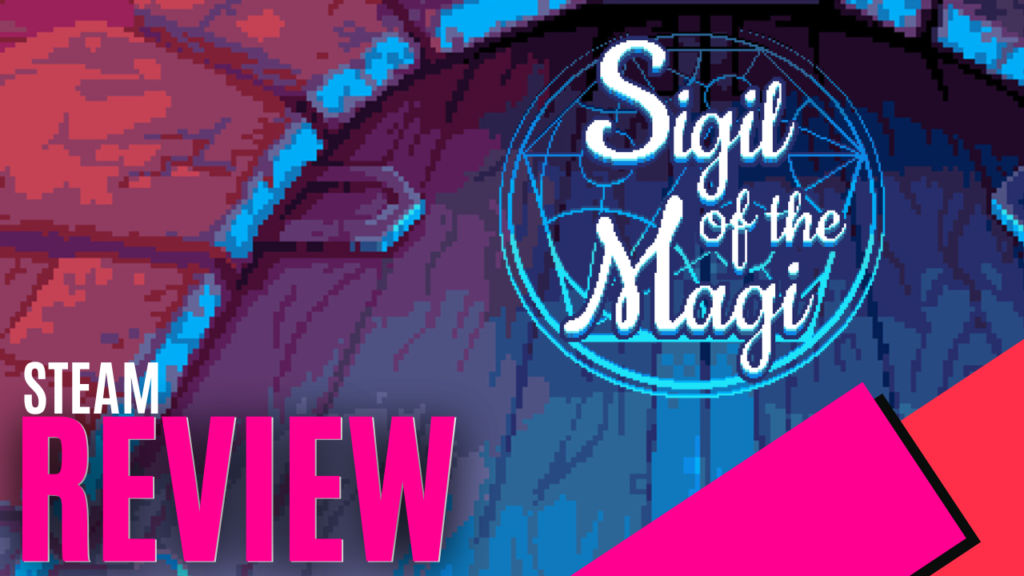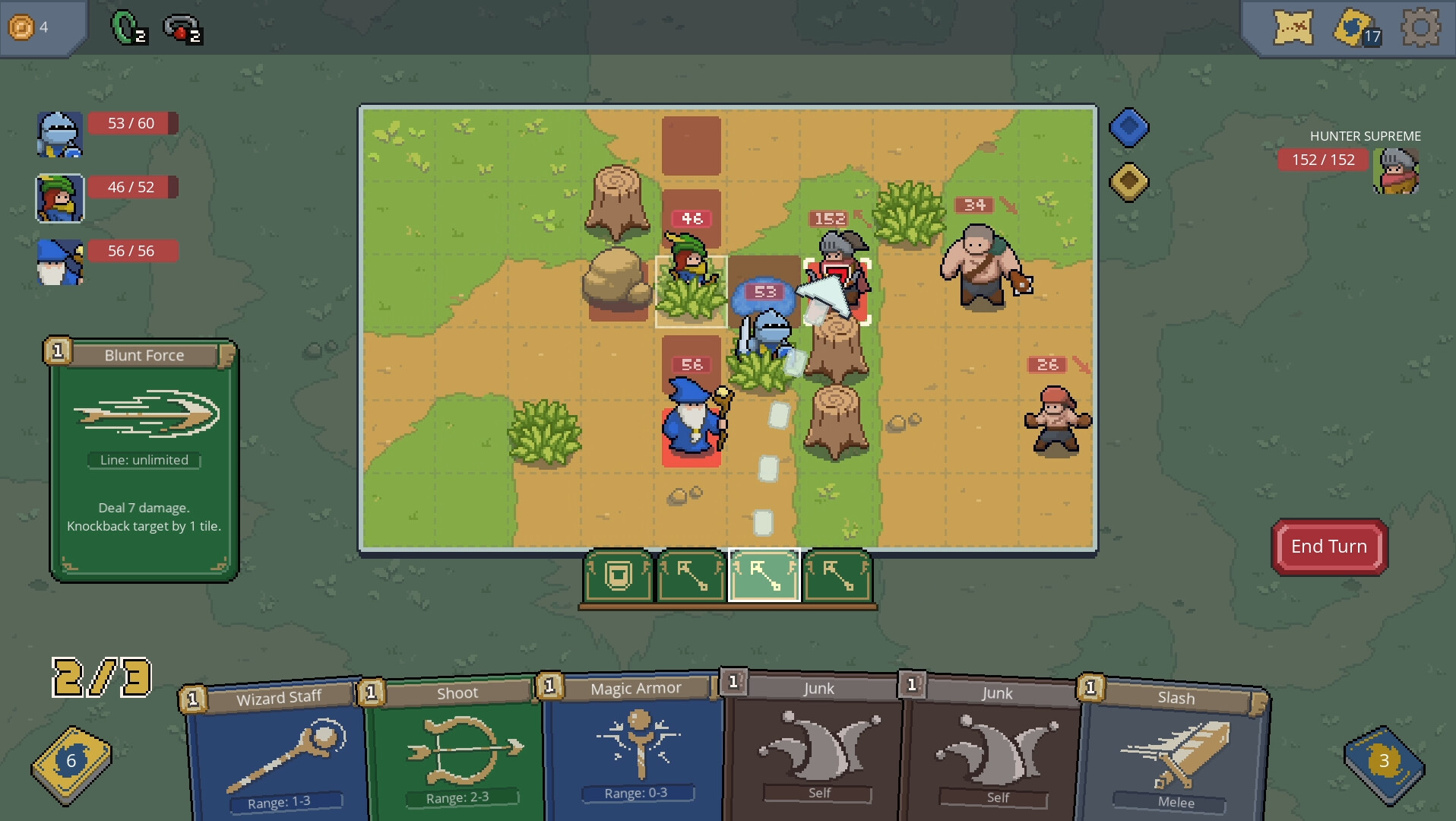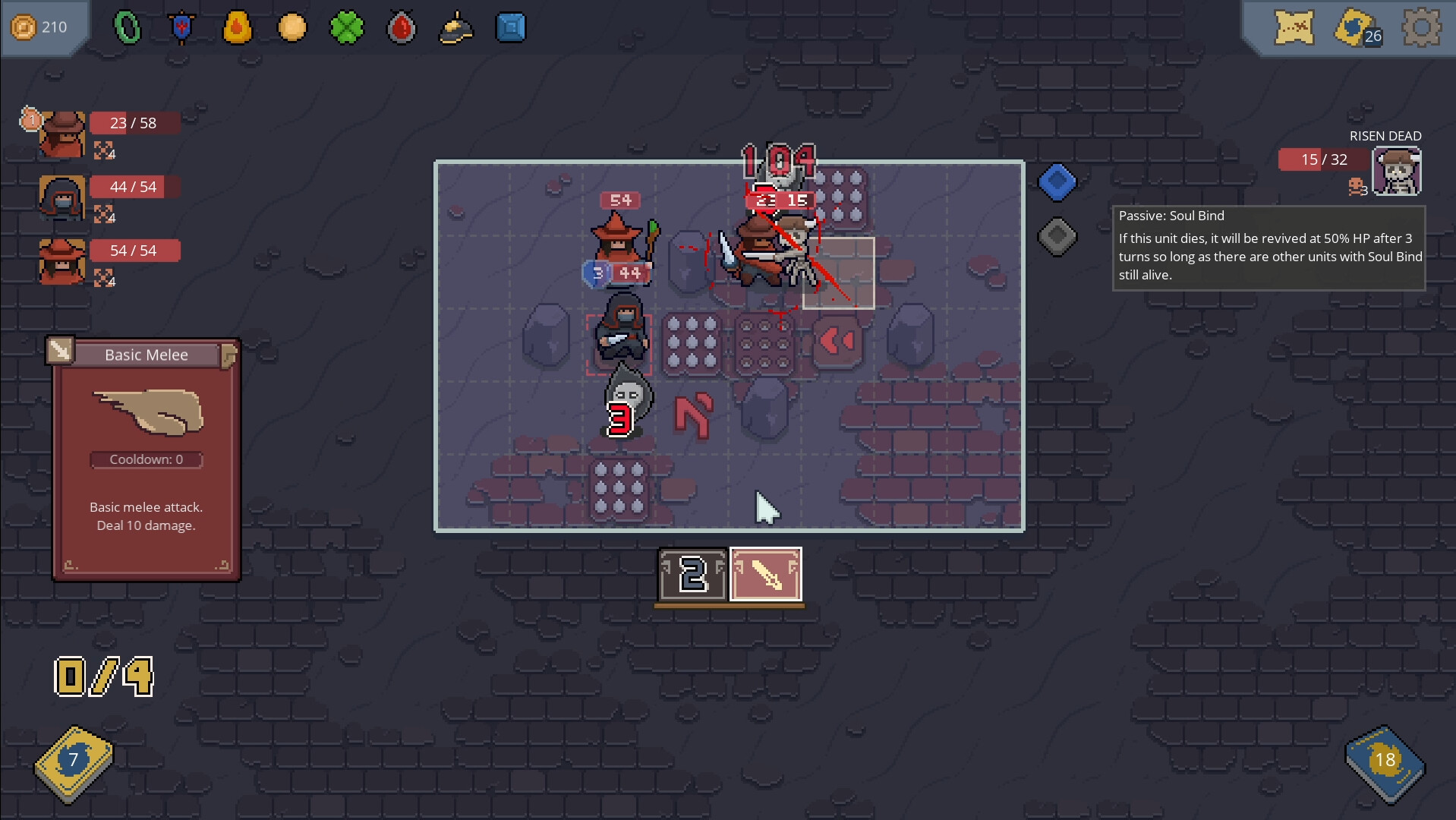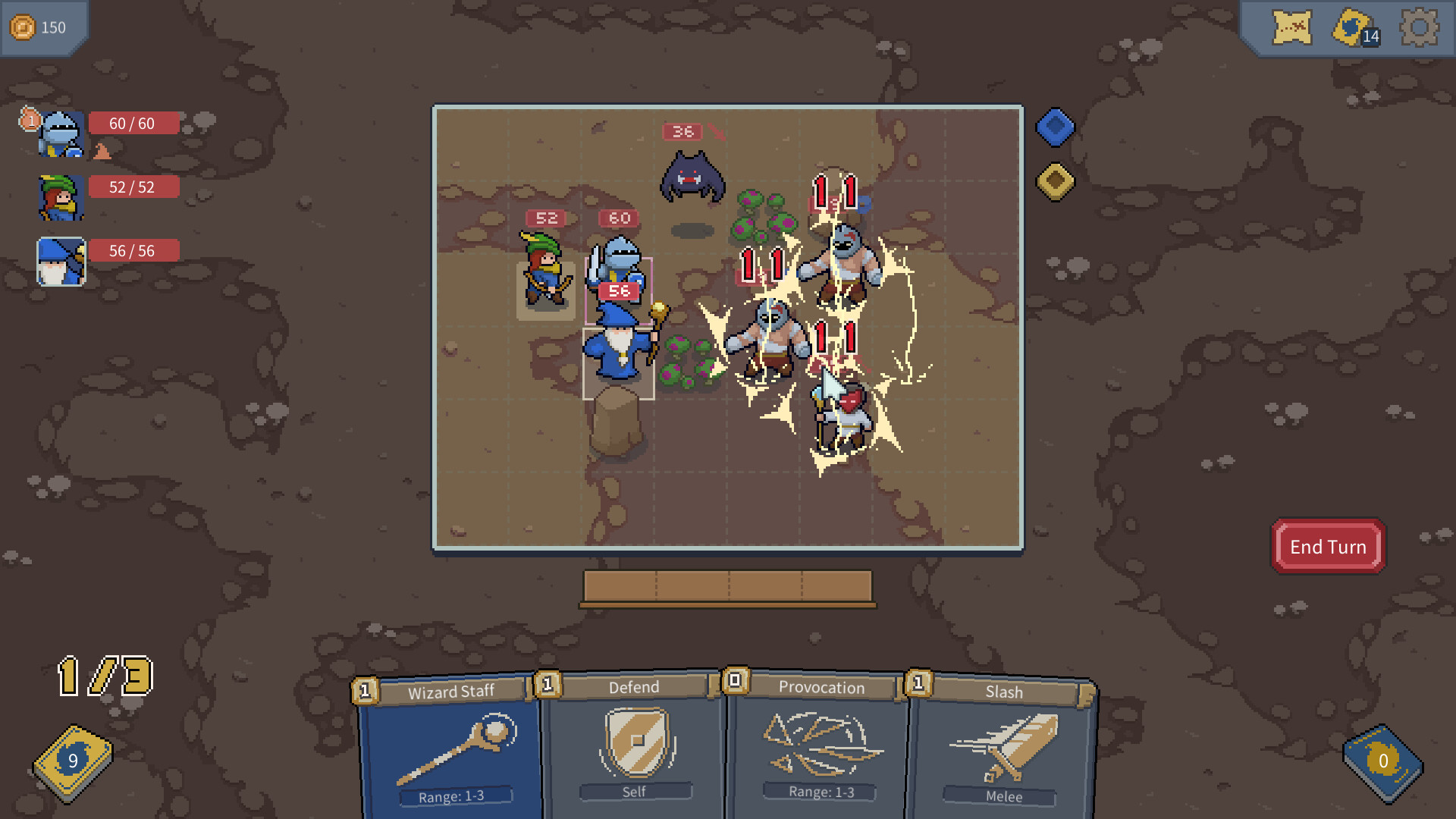
It’s been a while since I last reviewed a game, and with PAX AUS just around the corner, I was reminiscing on time gone by. Last year, as I strolled around the indie developer section waiting for an interview I had booked, I stumbled upon a team excitedly talking about a game developed by Yong, from Yongjustyong, a solo game developer based in Singapore.
Accepting a cute wooden badge and a beautiful card that looked like it belonged in a board game, I left for my interview, and regretfully, didn’t make it back to have a chat with them. Little did I know that almost a year later, Yong’s game, ‘Sigil of the Magi’, being published by The Iterative Collective, would appear in my inbox, and I now have a chance to correct that mistake.
As a deck-building game, the premise is fairly simple – a journey into the wilderness, battling enemies, and building a deck of cards that will make your rag-tag group of heroes unbeatable, but being a roguelike game, it’s never that simple.
You’ll be in control of three characters in the typical tank, range, and support triad, with the first three belonging to the Royal Vanguard – a stoic group of nobles. Each has its own passive ability, with the Knight gaining 2 armour points for each adjacent tile that’s occupied, if the Archer hasn’t moved, she’ll gain a 50% increase to her base damage characteristic, and the Wizard grants an additional level of power to adjacent allies, though he’ll also gain this buff if both of his teammates are in his immediate vicinity.

As you play through the game, you can work to unlock the two additional factions, being the Guild of Shadows, which consists of a Bounty Hunter, a Rogue, and a Witch, or the Far East, consisting of a Sword Master, a Monk, and a Priestess. This can be done in one of two ways. You can either complete the game with the previously available faction, or you can unlock them by earning enough experience as you try and push through the levels. Once these are unlocked, the final option grants you access to a custom group, letting you pick your preferred characters from the three factions, but, as I said previously, the roguelike aspects make this easier said than done.
The map is displayed as several locations, with a single sword representing enemies, crossed swords being elite enemies, a magnifying glass is a random encounter, money bags representing a trader, a treasure chest offering rewards, and a campfire offers your weary travellers a place to rest and recover, or, if you haven’t taken too much damage, you can train your group and upgrade one of their cards. These nodes are linked, and while some may split from one location to another, once you pick a path, you can only continue along it until you reach another junction or the Viking helmet that represents the stage’s final boss. Or if your squad is wiped out. That’s a very distinct possibility.
As you defeat enemies and search through treasure, you’ll collect gold coins to spend and cards that work as your character’s abilities. Cards can also be purchased from traders, and these will stay with you, regardless of the outcome of your current adventures, but you’ll also have a chance of finding Relics, potentially powerful passive bonuses that can greatly influence your chances of success. One of my favourites granted my characters +2 Thorns at the end of every turn where they had less than five, and these were used to damage the enemies whenever they attacked me, but unfortunately, these relics don’t stay with you should you find yourself back on the menu screen.

Combat is played on a gridded map, typically in a six-by-six format, but generally getting slightly bigger for elite mobs and the final boss. Your characters can move a certain number of squares, letting you move them into position before unleashing their abilities on an unsuspecting foe. The cards are colour-coded, representing the character they’re used for, displaying mana costs, range requirements, and a brief description of what the ability does.
This could be as simple as “7 Damage” or a little more advanced, like “Applies 8 Shield, and 1 Bleeding.” As you select the cards, you’ll see the character it belongs to highlighted, and if applicable, the squares it can affect, including its minimum and maximum ranges. I found this to be particularly useful, as I’d find myself struggling to keep track of my characters if they were surrounded by opponents, and most of the Archer’s shots can’t hit the adjacent squares.
Sigil of the Magi uses 16-bit pixel art almost exclusively to create beautiful avatars, combat arenas, and ability effects, reminding me a little of playing on my original Gameboy. The simple animations included characters bouncing back and forth, and two or three slides to represent the slashing of swords or the trajectory of an arrow, and although it’s simple, it works really well for the game.
It lets you easily recognise environmental obstacles such as water that lowers your defence, grass that provides you with the shielded benefit, and rocks that restrict your movements. Even with its artistic simplicity, the resources are well-defined and perfectly represent the characters and abilities they’re aimed at portraying. Following suit with the 16-bit feel is the audio. Sigil of the Magi uses simple tunes playing in the background, creating a calming tune that changes depending on the encounter you’re in, and nostalgia-inducing sounds to represent the various abilities of our three heroes and their enemies.

While the enemy characters can feel a little samey, the encounters vary by your playthrough. The maps felt like they were being randomly generated every time I was beaten back to the main menu, and even after spending my hard-earned gold to purchase and upgrade cards before heading back in, it was only on my first attempt that I managed to make my way to the final boss.
You’ll come across enemies using ranged abilities, smaller melee characters, enemies that summon additional combatants, spellcasters, and larger enemies that hit like a freight train, pushing you back with each blow, and any of these could be used to represent an elite encounter simply by having their health bar substantially higher than other mobs.
There’s no denying that Sigil of the Magi is a beautiful love note to deck builders and roguelike games, albeit a little on the difficult side of things. It perfectly combines turn-based strategy, deck building, and roguelike gameplay, offering players an addictive challenge as they strive to build the perfect group of adventurers, collecting and upgrading cards to push as far into the adventure as possible.
Although it’s set for release on the 20th of October, 2023, you can buy it under early access on Steam now, and if any of those genres appeal to you, you won’t regret the decision to support this amazing developer, and your feedback will help to improve the experience.

The Good
- Nostalgic pixel art graphics and sounds
- Addictive card-collecting mechanics
- Challenging roguelike gameplay
- Easy to read user interface
The Bad
- Maybe a little too difficult in the beginning








